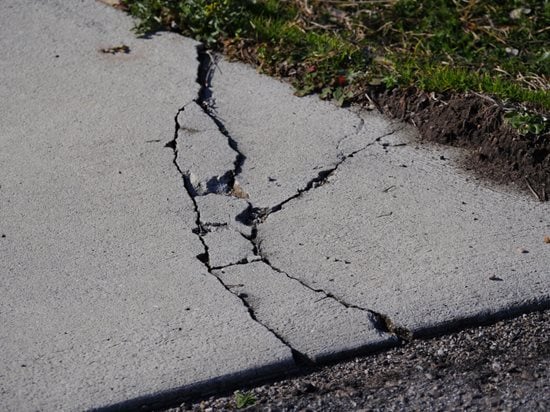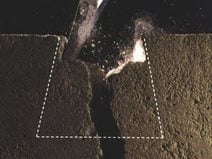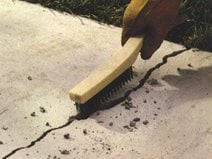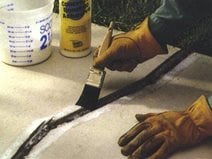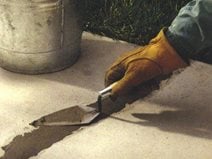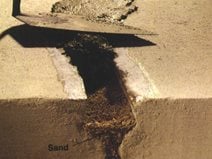- Concrete Driveways Info
- Concrete Driveway Pictures
- Exposed Aggregate
- Stamped Concrete Driveways
- Stained Concrete Driveways
- Modern Concrete Driveways
- Driveway Width
- Concrete Driveway Projects: Submitted by driveway contractors across the U.S.
- Concrete Driveway Cost
- Installing and Maintaining Concrete Driveways
- Concrete Driveway Construction Basics
- How to Clean a Concrete Driveway
- Concrete Driveway Maintenance
- Concrete Driveway Resurfacing
- Concrete Driveway Repair
- Driveway Sealer for Concrete
- Related Information
- Design Ideas: Concrete Driveway Info
- Concrete Contractors: Find Concrete Products and Suppliers
Concrete Driveway Crack Repair
Learn how to fix cracks in your concrete drivewayWhen left untreated, a small crack can turn into a large problem, so it’s vital to address cracks soon after you see them. If repairing cracks in the existing concrete on your driveway is on your home improvement list, read on to learn about concrete driveway crack repair.
Find concrete driveway contractors near me.
Why is your concrete cracking?
Before fixing your concrete, it’s a good idea to inspect your driveway and its surroundings to discover why your concrete is cracking. You can either hire a local experienced contractor who is well versed in this type of work, or you can do the inspection yourself if you know what to look for.
If your concrete cracked within just a few years of being installed, there may have been an installation error such as too much water mixed with the concrete or insufficient control joints.
If you’ve gotten many years out of your driveway and it has a few small cracks, that’s to be expected, as eventual cracking in concrete is inevitable.
Learn more about reasons why concrete cracks.
Determining the cause of cracking can inform you on steps forward: whether you can simply repair the cracks or need to replace the slab completely. If you have trees with large root systems nearby that are interfering with the integrity of the concrete, you’ll need to get that resolved before doing any repairs.
How do you fix cracks in a concrete driveway?
If the crack in your concrete is fairly thin (about 1/8 inch), it may be something you can handle yourself. If it’s wider than that, you may want to contact a contractor to make sure there’s not a larger issue with the stability of your concrete.
How to repair cracks in a concrete driveway:
2. Clean loose material from the crack using a wire brush, or a portable drill with a wire wheel attachment.
3. Apply at thin layer of bonding adhesive to the entire repair area using a paint brush. The bonding adhesive helps keep the repair material from loosening or popping out of the crack.
4. Use crack filler to fill the crack. "Feather" the repair with a trowel, so it is even with the surrounding surface.
Wide crack variation
If the width of the crack is an inch wide or larger, the process of repairing cracks is slightly different. Chisel out the crack and clean loose material as listed above. Then pour sand into the crack within the surface. Prepare sand- mix concrete, adding a concrete fortifier, then trowel the mixture into the crack. Feather until even with the surrounding surface.
Always follow the instructions on the crack repair product you purchase.
How do I fix a large crack in my driveway?
For cracks that are 1/2 inch or larger, additional steps need to be taken. Before filling cracks, one of the following should be placed into the crack:
- A backer rod. A backer rod is synthetic foam rod that you wedge into the crack before filling it with your repair material. Not only does it provide more strength to the area, it also allows you to use less filler in your repair job.
- Sand. You can fill larger cracks with sand then use your concrete filler to complete the job.
If the cracks in your driveway are significant, such as especially wide or especially deep cracks, you may want to consult with a professional contractor to figure out what steps to take next.
Is driveway crack repair a DIY project?
While it’s possible to fix cracks yourself, it’s essential to do the research necessary to make the repairs correctly. The benefits of hiring a contractor with experience in concrete repair is that they know how to address different types of damage, have experience in identifying what may have caused the cracks (and how to prevent them from reoccurring), and are familiar with what products work best for a variety of situations.
A local contractor will also have a sense of the best weather conditions to do concrete repair in your region—as temperature and humidity levels will affect drying times.
Driveway crack repair: Before and after
You fixed the cracks in your concrete driveway. Now what? Although it’s a relief to get those cracks filled, homeowners are often left with a new issue: concrete with an inconsistent look.
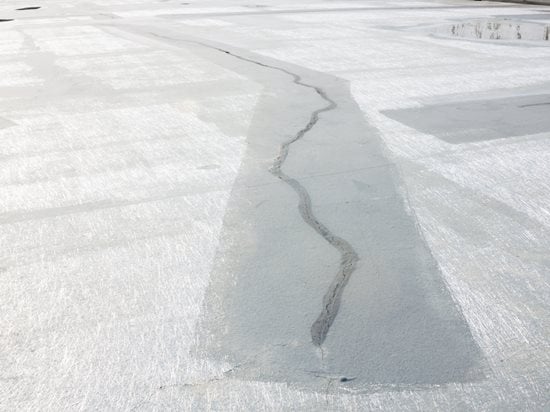
If you aren’t able to fill your concrete cracks with a product that closely matches your existing concrete, you may find that the repaired spots are very noticeable. Photosthai / Shutterstock.
Repaired cracks can sometimes stand out in a bad way. Here are a couple ways to resolve this issue:
- Concrete resurfacing. With driveway resurfacing, you can have a coating applied on top of your existing concrete surface—the coating acts as a new layer. You can customize the coating with colors, textures, and even patterns. With concrete resurfacing, you can even create the look of brick, cobblestone, wood, or any other material of your choice.
Concrete resurfacing will completely hide your repaired cracks, giving your driveway a consistent look—and one that’s basically brand new. - Concrete staining. Concrete stain deeply penetrates the surface to create fade-resistant, permanent color that won’t fade. By staining your driveway after making repairs, you can give the surface a continuous look, blending the repaired spots with the rest of the concrete.
- Concrete scoring. With concrete scoring, a contractor will add scorelines to your driveway to create a pattern that incorporates your driveway’s existing cracks. You’ll keep the cracks that are already there, grinding and sealing them to prevent further cracking. This is a great way to work with the cracks rather than against them. When done well, concrete scoring decreases the likelihood of future cracking because the existing cracks act as expansion joints.
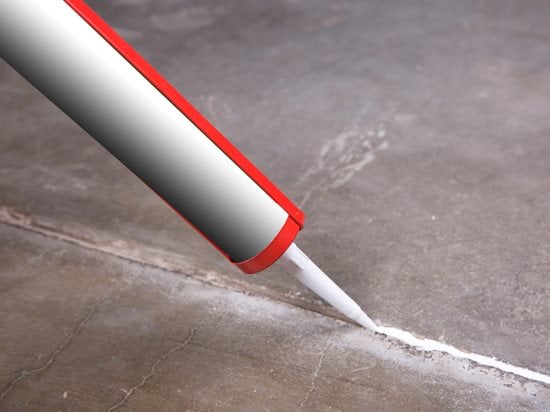
You can typically apply products such as concrete sealant or epoxy filler to concrete cracks with a caulking gun. Dimik_777 / Shutterstock.
What is the best driveway crack filler?
With the right concrete driveway crack filler, you can hide unsightly cracks from sight and prevent them from getting bigger. So, what to use to fill cracks in your driveway? Here are some different types and their qualities so you can get an idea of what will work best for you.
- Concrete sealant: Concrete crack sealer often comes in a tube so you can squeeze it directly onto the crack from a bottle or use a caulking gun. Crack sealers come in different colors, so be sure to find one that most closely matches your existing concrete.
- Epoxy filler: These harden quickly so the application process needs to be fast. Similar to a concrete sealant, it can typically be applied using a caulking gun. Epoxy filler is good for small cracks that are 1/8 inch wide or smaller.
- Concrete patch: A benefit of using this concrete mix is that there’s no mixing required on your part. When making your selection, pick one that is non-shrinking.
RELATED:
Concrete Driveway Finishes
